Classic Mango Mochi
on Feb 09, 2023, Updated Nov 21, 2023
This post may contain affiliate links. Please read my disclosure policy.
May I impress you with this refreshing homemade Japanese Mango Mochi? Tangy and sweet mango filling is covered with soft and chewy mochi cake. It’s rolled into mango mochi balls with a delicious shredded coconut coating, perfect for a hot summer day! This recipe is quick to make, and can be easily customized for vegan or dairy-free preferences.
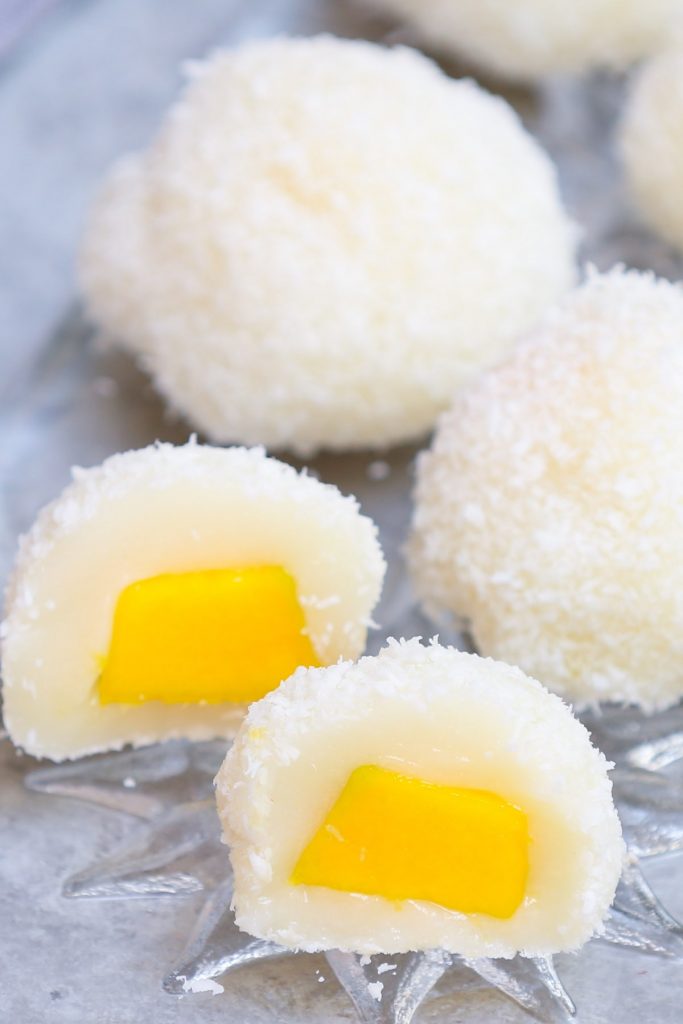
Mango Mochi is one of our family’s favorite desserts – the combination of mango, coconut, and the sticky mochi dough is heavenly delicious and we make this tropical treat almost every week recently! It may seem intimidating to make this delicate treat, but it’s quite easy to prepare with a few simple tips.
Similar to Daifuku, Mochi is a classic Japanese dessert made with glutinous rice flour. Traditional mochi (such as Green Tea Matcha Mochi) is made with special glutinous rice flour: Mochiko or Shiratamako. The good news is that this Mango Mochi recipe uses the regular glutinous rice flour that’s widely available, producing an amazingly delicious mochi cake that your whole family will love. So it’s absolutely worth the effort to learn!
What you’ll need for this recipe
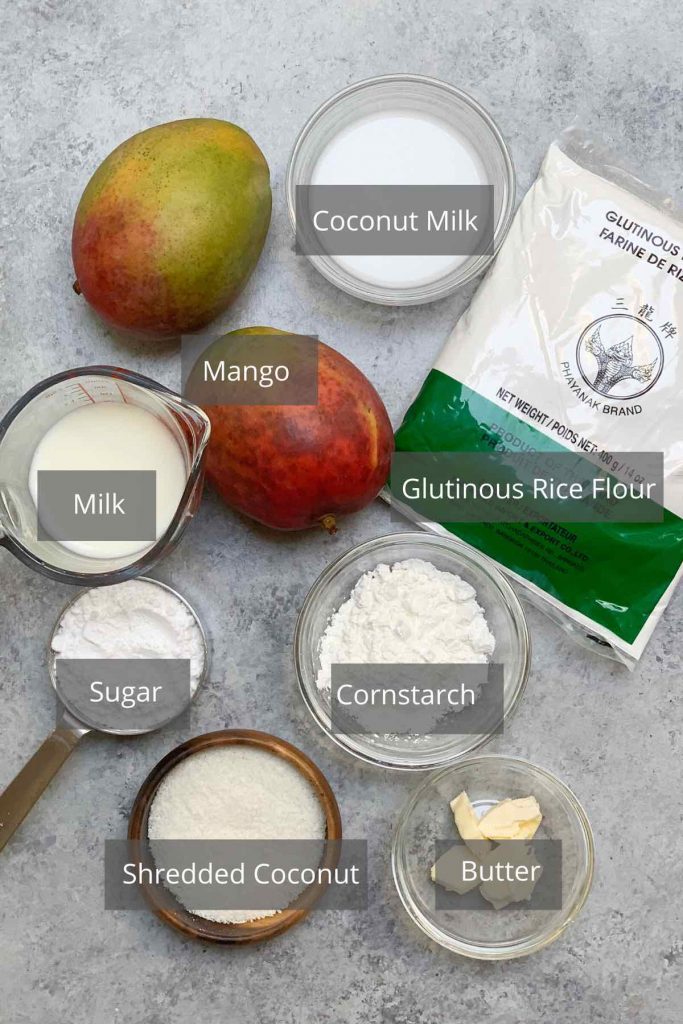
- Glutinous Rice Flour – Also called sticky rice flour or sweet rice flour. You can find it at most Asian grocery stores or order online from Amazon.
- Fresh Mango – I recommend using ripe mangos that are sweet and not too hard. When you buy mangos, ripe mangos feel soft when you squeeze it gently. You can also replace mango with any filling you like.
- Sugar – I used powdered sugar, and the regular granulated sugar works great too. You can also replace it with stevia for a sugar-free Keto diet.
- Cornstarch
- Milk – I used the whole milk for the maximum flavor. You can use fat-free milk, or replace it with almond milk or coconut milk for a dairy-free option.
- Coconut Milk – Coconut milk beverage works better than canned coconut milk, which contains solid chunky lumps of the white stuff. I like to use unsweetened coconut milk so that it’s easier to control the sweetness level of your dough.
- Butter – Use unsalted butter for this recipe. You can substitute vegetable oil for a vegan option.
- Shredded Coconut – It helps to add an extra coconut flavor to the treat while preventing the dough from sticking. I recommend using unsweetened shredded coconut for this recipe.
How to make mango mochi
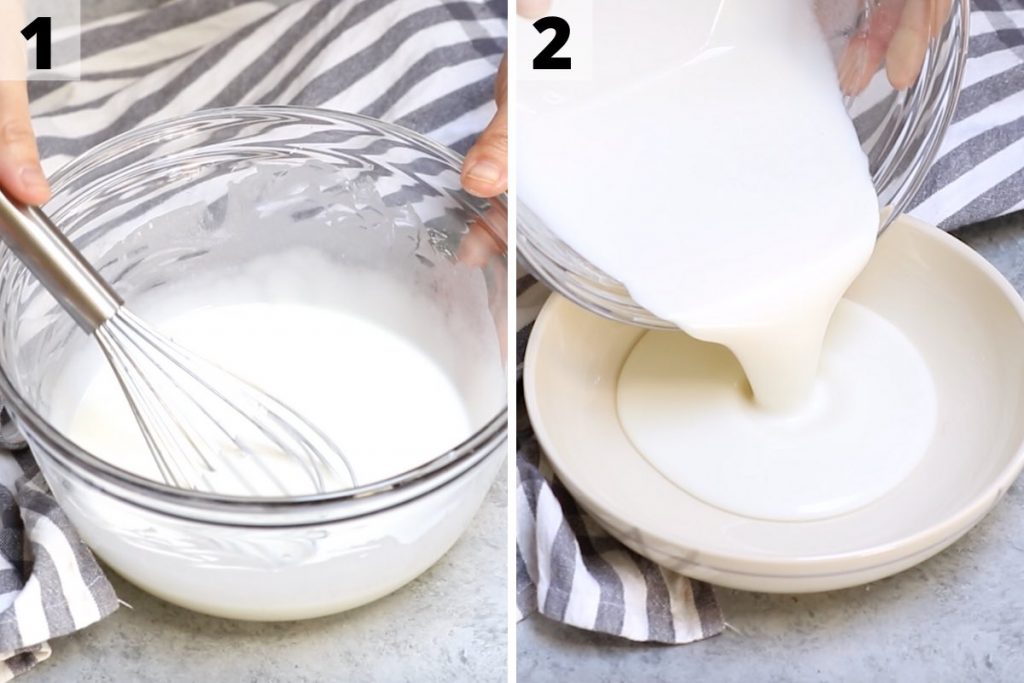
1. In a large mixing bowl, add glutinous rice, cornstarch, sugar, milk, coconut milk, and melted butter. Mix until everything is dissolved completely. (It’s important to make sure the mixture is smooth without any lumps.)
2. Transfer the mixture to a smaller bowl that fits into your steamer.
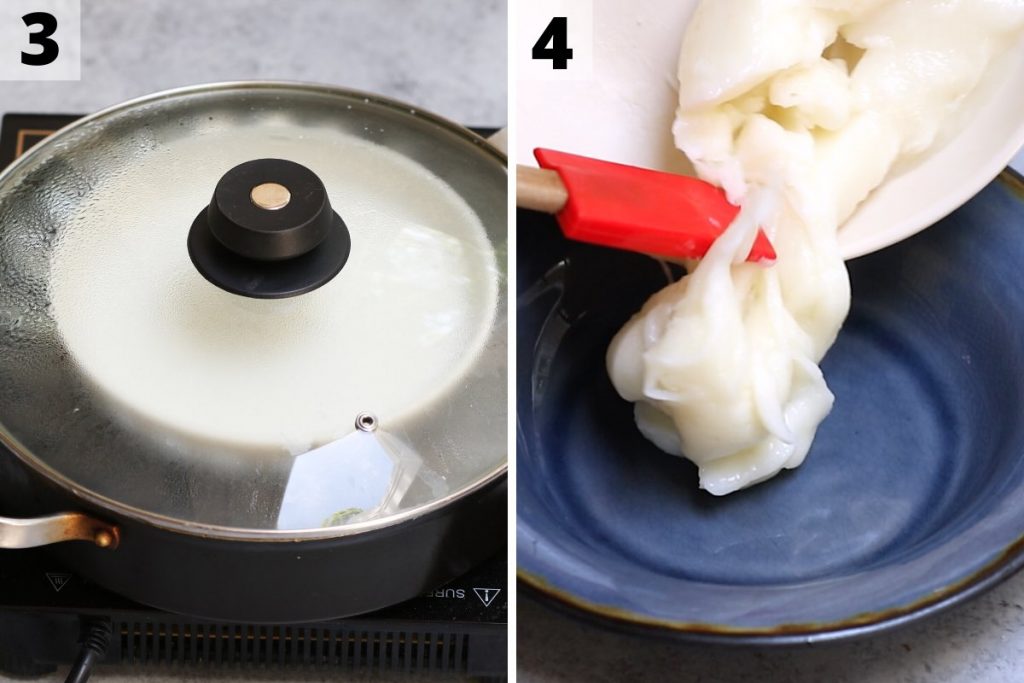
3. Place the bowl into the steamer. Cover and steam for 10 minutes until the dough becomes slightly translucent. (To test the doneness, poke the dough using a spatula or fork, if there’s no liquid in the middle, the dough is ready.)
4. Transfer the mochi dough to another plate, cover with plastic wrap, and let it cool to room temperature. (Use oven mitts or kitchen towel when removing the plate from the steamer as it’s very hot!)
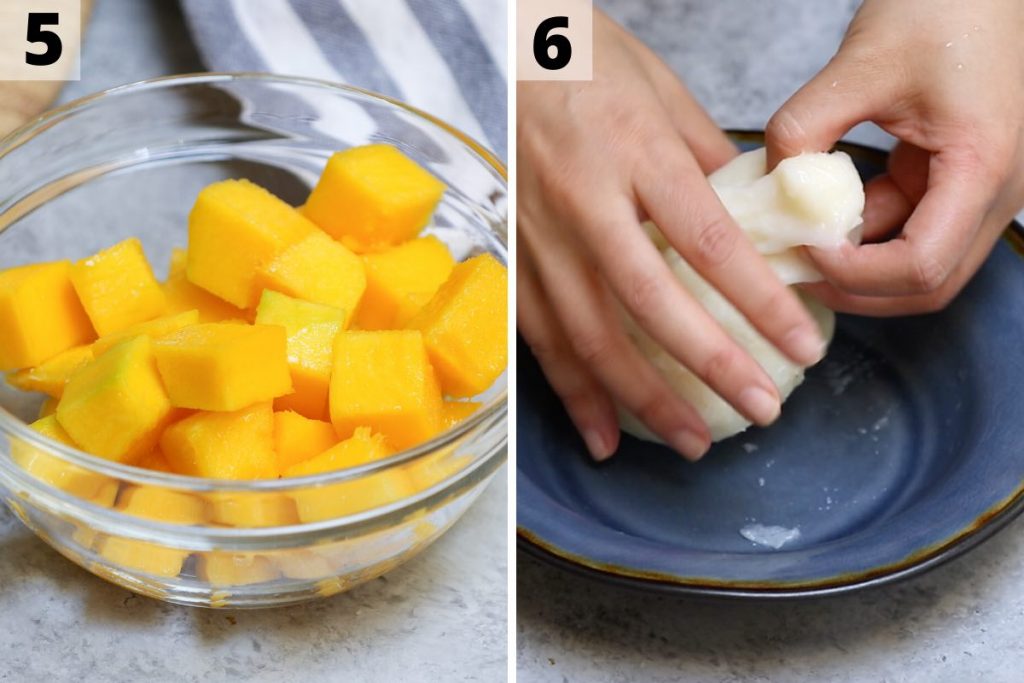
5. While waiting, cut the mango into small square cubes (about 1/2 inch).
6. Wet your hands with water and take about 1 ½ tablespoons of dough. Form the dough into a ball and flatten it into a circular shape using your hands.

7. Place a piece of mango in the center. Pinch the four corners of the mochi wrapper, and then pinch the remaining corners together.
8. Coat the mochi ball with shredded coconut. Chill the mango mochi balls in the refrigerator for at least 30 minutes before serving.
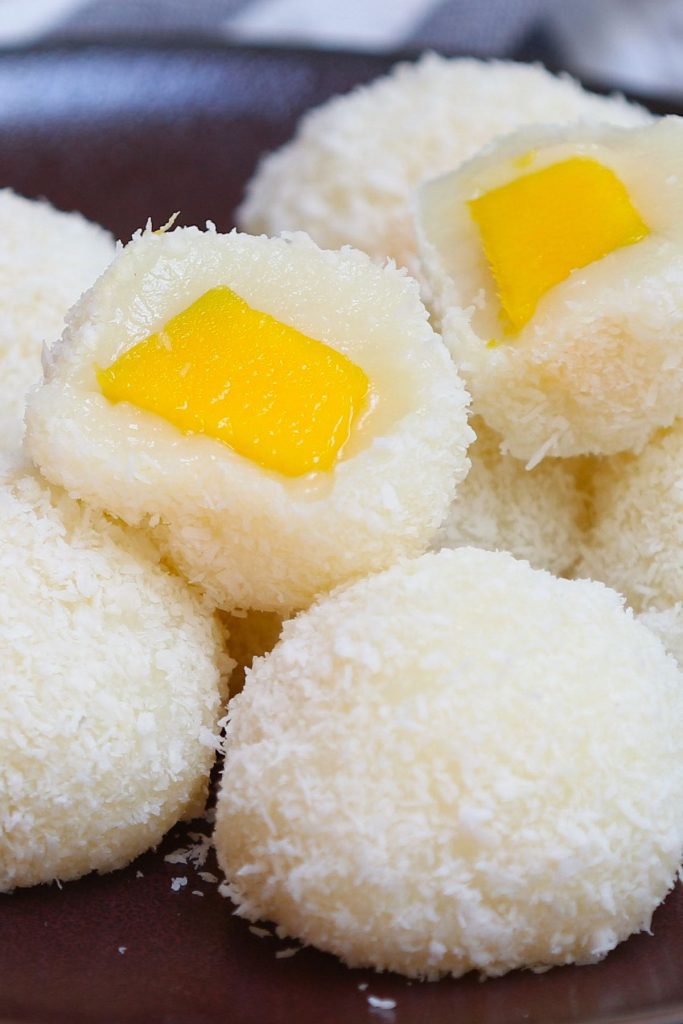
Tips for making the perfect mango mochi:
- Make sure to use regular glutinous rice flour for this recipe. If you plan to use Mochiko flour or Shiratamako flour, follow the instructions from this post on how to make the mochi dough.
- Choose ripe mangos that are sweet and soft. If the mango filling is hard and too sour, it can ruin your mango mochi experience.
- It’s very important to mix all ingredients THOROUGHLY and make sure everything is completely dissolved before cooking them in a steamer. Otherwise, your mochi balls won’t have a smooth texture.
- Avoid overcooking the dough. Cooked mochi dough should be sticky without any running liquid in the middle. You can use a spatula or fork to check before removing the dough from the steamer.
- Cover the cooked dough with plastic wrap when it’s resting. Otherwise, the surface of the dough will dry out.
- As the dough is very sticky, you’ll need to wet your hands with water frequently when wrapping the mango.
- The trickiest part of this recipe is to wrap the mango in the mochi dough cake. It may take a few tries to get it into great round shape, but after a few, you’ll get a hang of it.
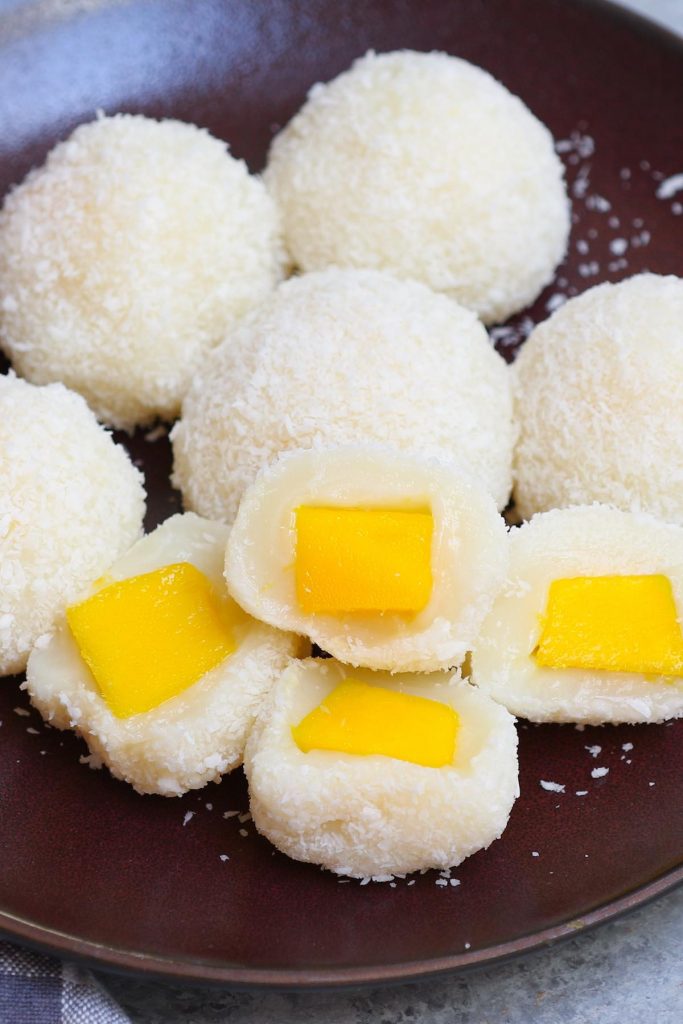
Frequently Asked Questions
How to store mango mochi and how long do they keep?
Store them in an airtight container in the refrigerator and they can last for 2 days. These mango mochi balls taste the best on the day they’re made.
What does mango mochi taste like?
The mochi layer is sticky, chewy, and sweet with a great earthy flavor. A mango filling is sweet and tart.
Can I make mango mochi ice cream with this recipe?
No, the mochi dough for this recipe doesn’t freeze well. If you’d like to make mango mochi ice cream, you need to use Mochiko or Shiratamako flour, and make a mochi dough following the instruction on this post.
If You Love this Recipe Try These Out!
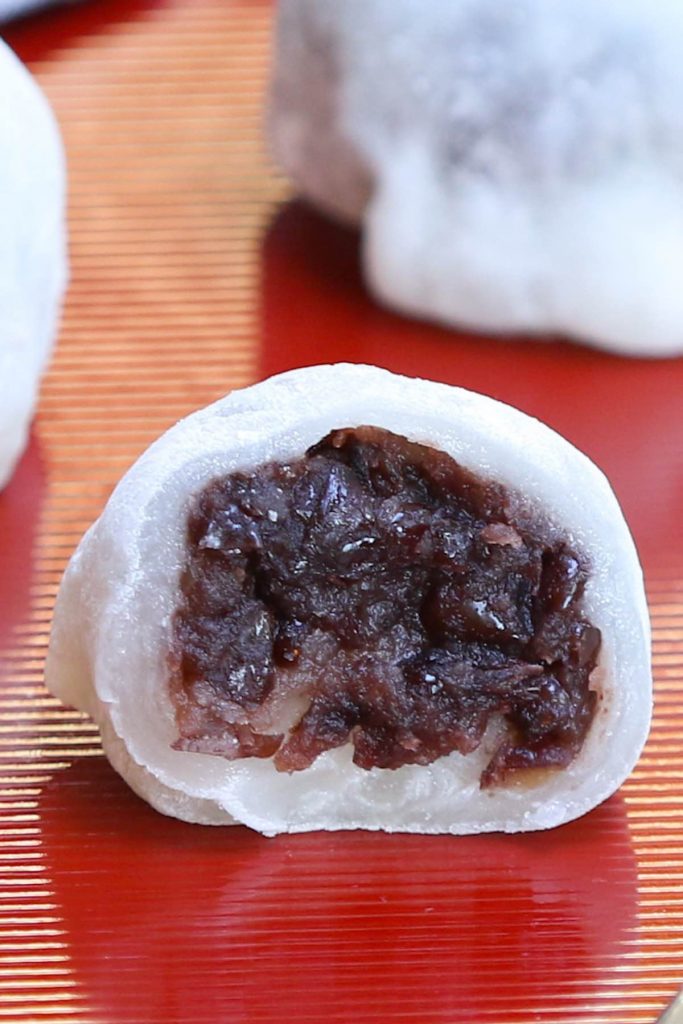
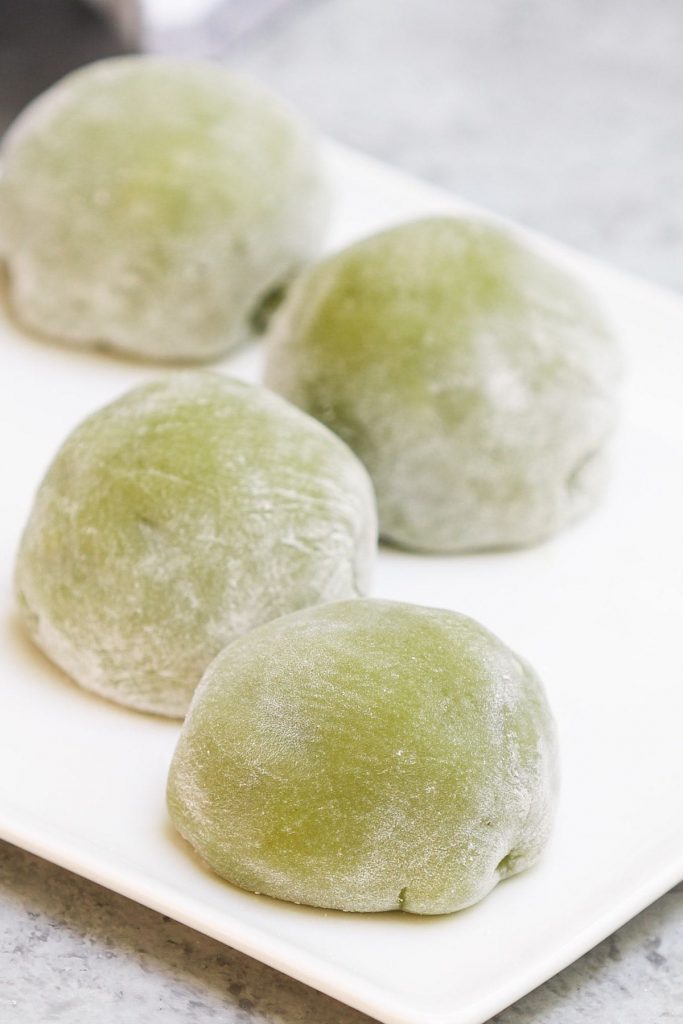
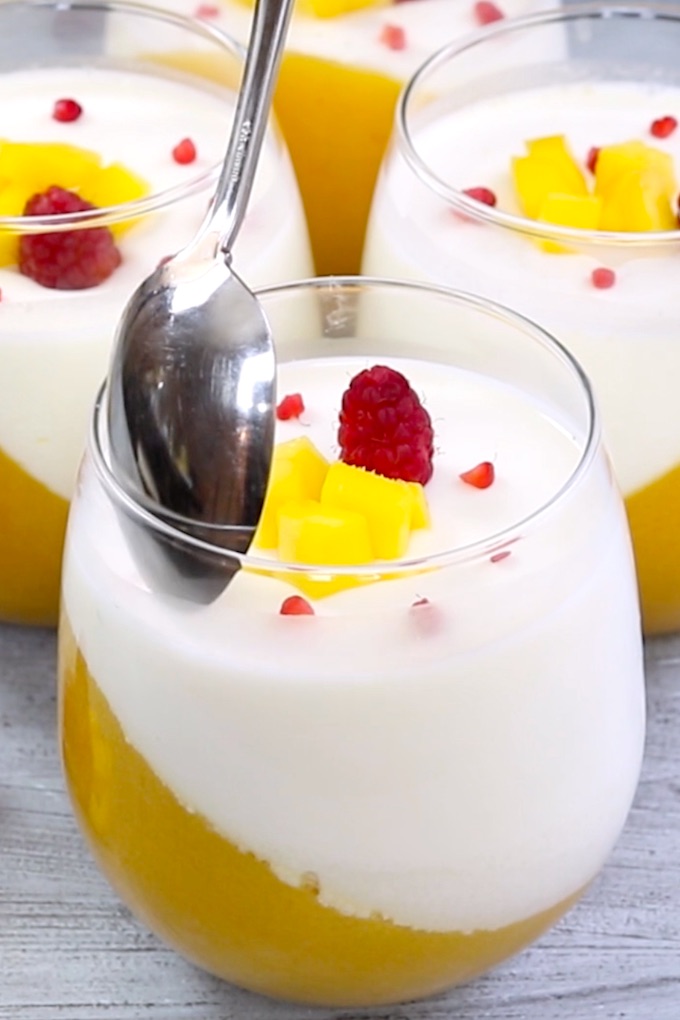
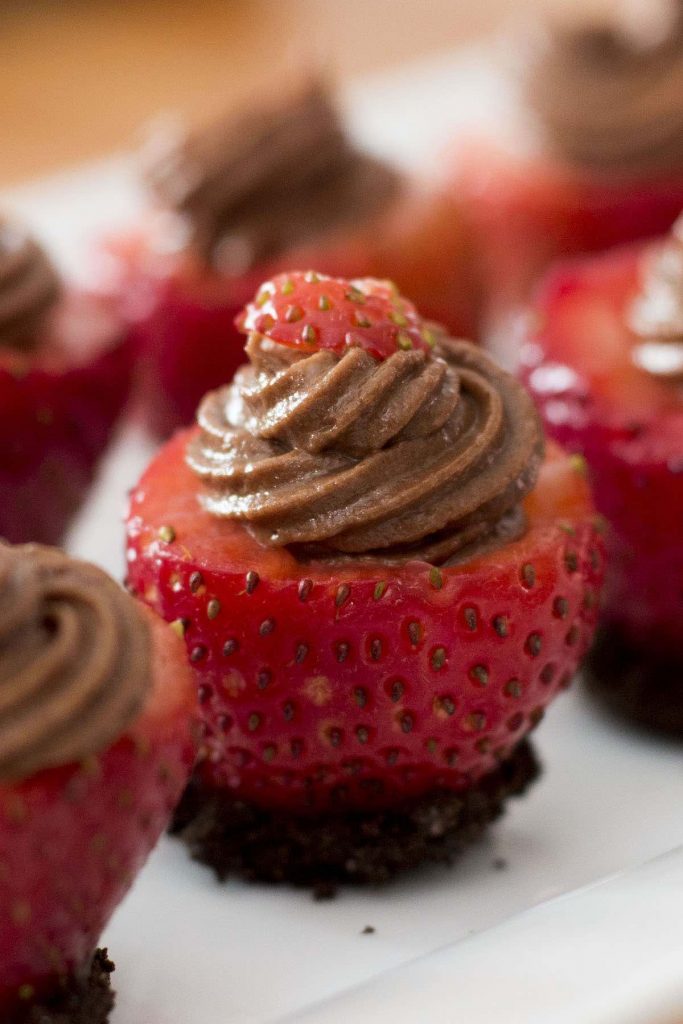
If you’ve tried this mango mochi then don’t forget to rate the recipe and let me know. I love hearing from you!
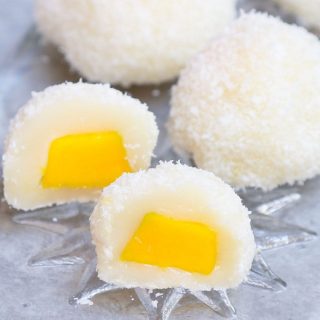
Mango Mochi Recipe
Ingredients
- 3/4 cup glutinous rice flour
- 1/2 cup powdered sugar
- 1/4 cup cornstarch
- 1/2 cup milk
- 1/3 cup coconut milk
- 1 mango, (use a ripe mango that’s sweet and not too firm)
- 1 tablespoon unsalted butter, melted
- shredded coconut for coating
Instructions
- In a large mixing bowl, add glutinous rice flour, cornstarch, sugar, milk, coconut milk. Mix well and add melted butter.
- Mix until everything is dissolved completely. (It’s important to make sure the mixture is smooth without any lumps.)
- Transfer the mixture to a smaller bowl that can fit into your steamer.
- Add a steaming rack to a large pot and add about 2 inches of water. Once boiling, place the bowl with the mixture into the pot.
- Cover and steam for 10 minutes until the dough becomes slightly translucent. (To test the doneness, poke the dough using a spatula or fork, if there’s no liquid in the middle, the dough is ready.)
- Transfer the mochi dough to another plate, cover with plastic wrap, and let it cool to room temperature. (Use oven mitts or kitchen towel when removing the plate from the steamer as it’s very hot!)
- In the meantime, cut the mango into small square cubes (about 1/2 inch).
- Wet your hands with water and take about 1 ½ tablespoon of dough. Form the dough into a ball and flatten it into a circular shape using your hands.
- Place a piece of mango in the center. Pinch the four corners of the dough, and then pinch the remaining corners together.
- Coat the mochi ball with shredded coconut. Chill the mango mochi balls in the refrigerator for at least 30 minutes before serving.
Notes
- Make sure to use regular glutinous rice four for this recipe. If you plan to use Mochiko flour or Shiratamako flour, follow the instructions from this post on how to make the mochi dough.
- It’s very important to mix all ingredients thoroughly and make sure everything is completely dissolved before cooking them in a steamer. Otherwise, your mochi balls won’t have a smooth texture.
- As the dough is very sticky, you’ll need to wet your hands with water frequently when wrapping the mango.
- The trickiest part of this recipe is to wrap the mango in the mochi dough cake. It may take a few tries to get it into great round shape, but after a few, you’ll get a hang of it.
Nutrition
Nutrition information provided is an estimate only and will vary based on ingredient brands and cooking methods used.
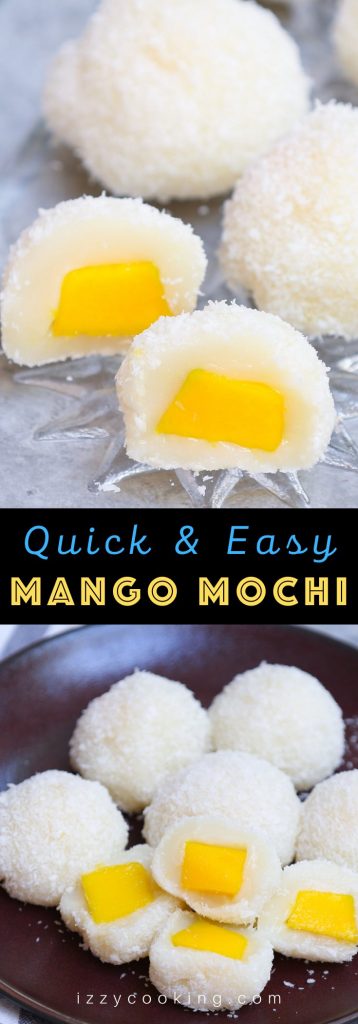
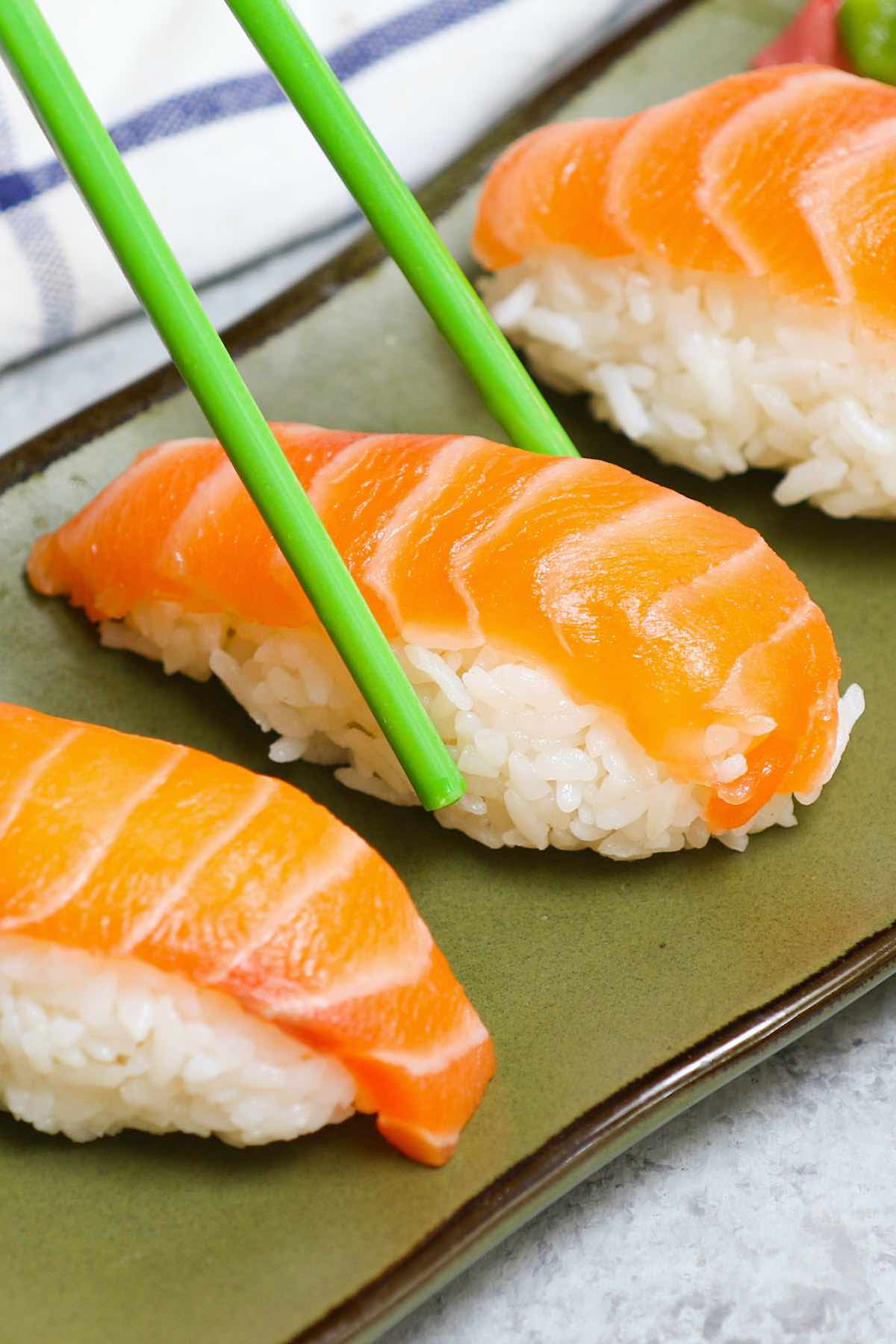
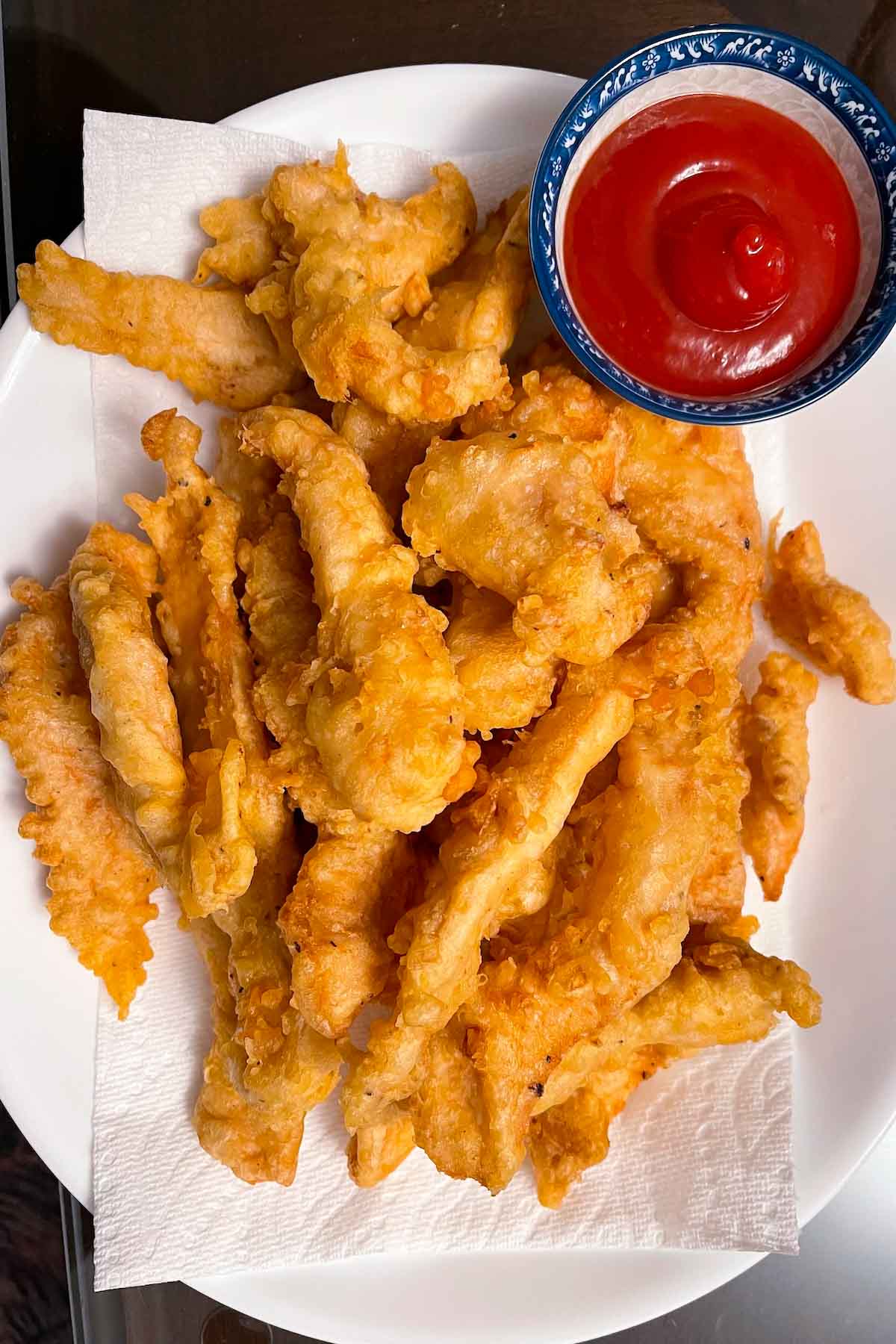
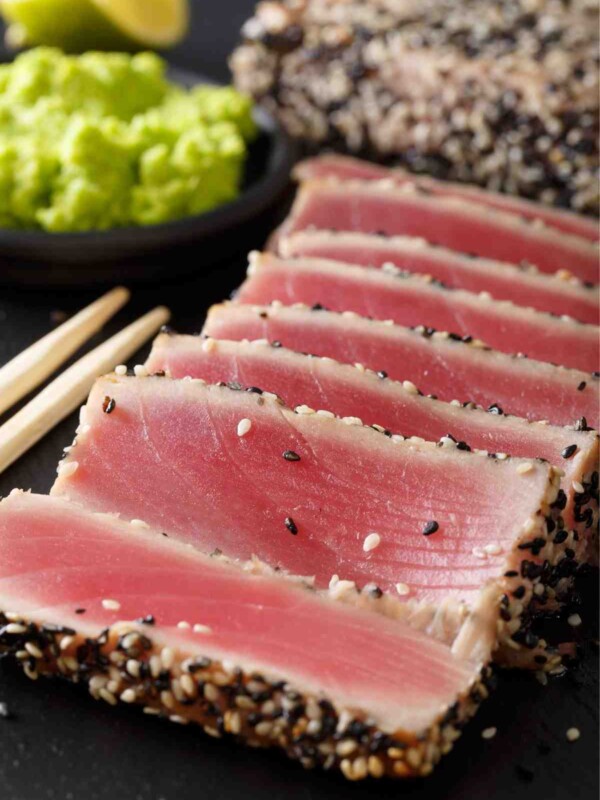
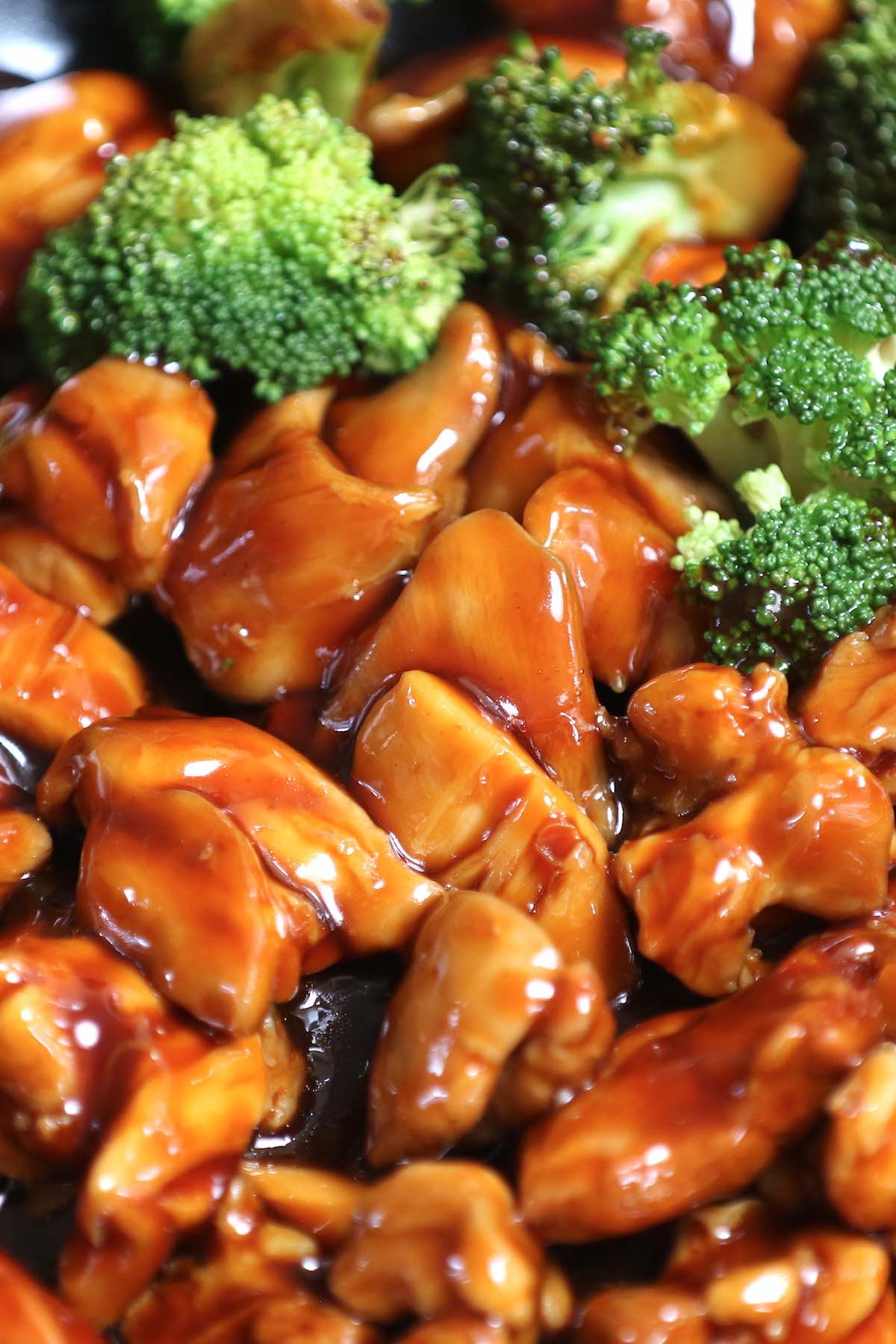
YES YES YES! This is something I have been wanting to try! Thanks for sharing!
So yummy! What a delicious summer treat. Without being too overly sweet. Really loved it.
Do I have to use coconut? Not a fan
Hi Chenoa, the mochi balls are quite sticky, so the coconut will help prevent them from sticking to the plate or your hands. If you don’t like coconut, you may try graham cracker crumbs or Oreo crumbs. Hope it helps.
Alternatively you can cook some glutinous rice flour on a pan and sprinkle it on surface so it won’t stick
Sounds like a good idea. Have you tried that before?
Ok ty! ❤ Might end up trying toasted flour.
What would happen if I used mochiko / shiratamoko flour with this recipe? Is there something different between mochiko and regular glutinous rice flour?
Hi Jenny, you should use regular glutinous rice flour for this recipe. If you want to use mochiko, try out a different recipe like this one: https://izzycooking.com/strawberry-mochi/
Do I need to adjust steaming time if I’m making double or triple the recipe?
Hi Jay, the steaming time is the same if you double or triple the recipe.
I don’t have a steamer of any kind, but I do have a rice cooker (the kind you put in the microwave). Can I do this instead of using the steamer? Thanks!
I haven’t tried this recipe with a rice cooker, and I think it will be difficult to steam the mochi using a rice cooker.
Can I steam this on top of the stove in a cast iron pan? Also, may I use sweet rice flour instead? and also is this recipe vegan friendly?
Looks delicious!! is coconut milk necessary though? are any other substitutes applicable to this recipe?